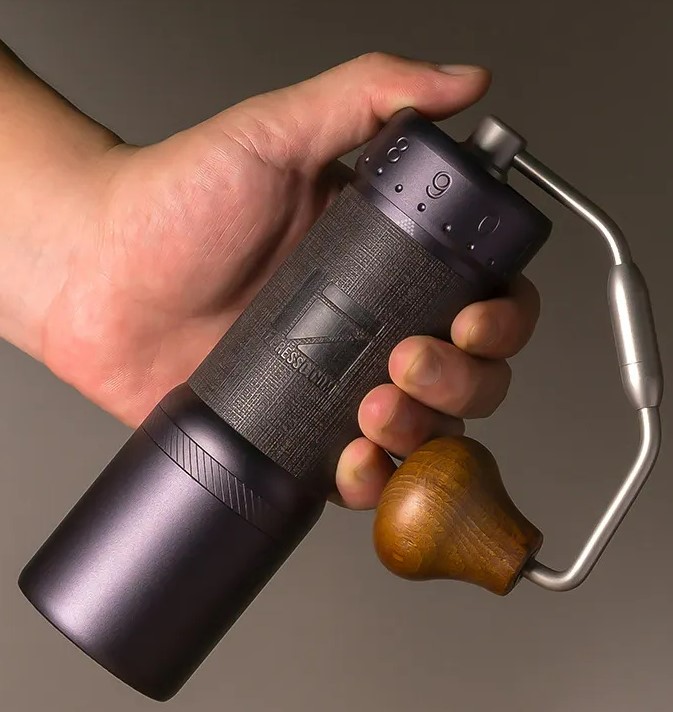Unlock the Secret to Freshly Ground Coffee: Your Ultimate Grinder Guide
Understanding the subtleties in between blade and burr mills is simply the beginning; a journey that delves into work dimensions, maintenance rituals, and aspects that can make or break your morning brew awaits those seeking to master the art of grinding coffee beans. Join us as we navigate through the intricate world of coffee mills, exposing the tricks that can really elevate your daily cup of joe to a new level of quality and taste.
Kinds of Coffee Grinders
Featuring a range of mechanisms and layouts, coffee mills been available in numerous types to accommodate various choices and brewing methods. Both main categories are blade grinders and burr grinders. Blade mills utilize a spinning blade to chop the coffee beans into premises. While they are a lot more cost effective, they might create unequal work sizes due to irregular grinding. On the various other hand, burr grinders squash the beans in between a moving grinding wheel and a non-moving surface. This leads to a much more uniform work dimension, vital for a constant removal and balanced taste in the last cup. Within the burr grinder classification, there are flat burr grinders and conical burr mills. Flat burr grinders supply an even more consistent grind dimension however can sometimes get too hot the coffee grounds. Conelike burr mills are known for their quieter operation and less warmth production, making them a prominent selection amongst coffee enthusiasts. Choose the kind of coffee grinder that finest matches your brewing method and taste choices to boost your coffee experience.

Burr Vs. Blade Grinders
When comparing burr and blade mills for coffee, one must consider the vital distinctions in work uniformity and total developing top quality. Burr mills are understood for their capability to supply a much more uniform grind dimension contrasted to blade mills. This consistency is vital for making sure an even extraction during the brewing procedure, inevitably leading to a more balanced and savory mug of coffee. The factor behind this exists in the style of burr grinders, where 2 unpleasant surface areas, either level or cone-shaped, crush the coffee beans to a consistent dimension (1Zpresso J-Max).
On the other hand, blade grinders cut the beans utilizing a spinning blade, which can lead to irregular bit sizes due to irregular grinding. This disparity in fragment sizes can lead to over-extraction of smaller sized bits and under-extraction of bigger ones, affecting the total preference and quality of the made coffee. For coffee lovers looking for precision and control over their work size, spending in a burr mill is commonly considered the premium option.

Variables to Think About When Choosing
Considering the pivotal duty work consistency plays in making top quality, when selecting between burr and blade grinders for coffee, there are several vital aspects to take right into account. Burr grinders commonly offer a vast array of work sizes, allowing look these up you to readjust for different brewing approaches such as coffee, drip coffee, or French press. Size and capacity are additionally crucial considerations, specifically if you prepare to grind coffee in big quantities or require a compact mill for minimal counter space.
Grind Size for Different Brewing Approaches
To accomplish optimal taste extraction, picking the proper grind size is crucial when preparing coffee for various developing techniques. The work size directly influences the rate of extraction during developing. For methods like espresso, which call for a short removal time and pressure, a great grind is suitable to optimize the surface area touching water. On the other hand, developing methods like French press or chilly mixture necessitate a coarser grind to stop over-extraction and anger because of much longer soaking times. Leak coffee manufacturers work best with a medium work dimension, enabling for a balanced extraction over a moderate brewing helpful site period. Pour-over techniques such as Chemex or V60 take advantage of a tool to great work to control the flow rate and extraction time. Comprehending the partnership in between work size and brewing technique is essential for unlocking the full potential of your coffee beans and achieving a delicious, well-balanced cup of coffee every single time.
Maintenance and Cleaning Tips
Making certain proper upkeep and routine cleaning of your mill is important for maintaining its performance and expanding its lifespan. To preserve the quality of your coffee grounds and the performance of your grinder, it is suggested to cleanse your grinder extensively at least when a month. In addition, consider utilizing mill cleaning pellets or tablets for an extra extensive cleansing procedure.
Regular upkeep additionally includes looking for any indicators of deterioration, such as plain burrs or loosened screws, and addressing them without delay. It is important to maintain your grinder in top problem to make certain consistent grind dimension and top quality coffee removal. By incorporating these maintenance and cleansing tips right into your regimen, you can enjoy fresh and tasty coffee with every mixture.

Verdict
